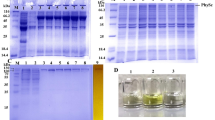Abstract
Whilst Na+ has replaced H+ as a major transport driving force at the plasma membrane of animal cells, the evolutionarily older H+-driven systems persist on endomembranes and at the plasma membrane of specialized cells. The first member of the SLC36 family, present in both intracellular and plasma membranes, was identified independently as a lysosomal amino acid transporter (LYAAT1) responsible for the export of lysosomal proteolysis products into the cytosol and as a proton/amino acid transporter (PAT1) responsible for the absorption of amino acids in the gut. In addition to LYAAT1/PAT1, the family comprises another characterized member, PAT2, and two orphan transporters. Both PAT1 and PAT2 mediate 1:1 symport of protons and small neutral amino acids such as glycine, alanine, and proline. Their mRNAs are broadly and differentially expressed in mammalian tissues. The PAT1 protein localizes to lysosomes in brain neurons, but is also found in the apical membrane of intestinal epithelial cells with a role in the absorption of amino acids from luminal protein digestion. In both cases, protons supplied by the lysosomal H+-ATPase or by the acidic microclimate of the brush border membrane drive transport of the amino acids into the cytosol. The subcellular localization and physiological role of PAT2 have still to be determined. SLC36 transporters are related distantly to other proton-coupled amino acid transporters, such as the vesicular neurotransmitter transporter VIAAT/VGAT (SLC32) and system N transporters (SLC38 family).

Similar content being viewed by others
References
Agulhon C, Rostaing P, Ravassard P, Sagné C, Triller A, Giros B (2003) The lysosomal amino acid transporter LYAAT-1 in the rat central nervous system: an in situ hybridization and immunohistochemical study. J Comp Neurol (in press)
Bermingham JR Jr, Shumas S, Whisenhunt T, Sirkowski EE, O'Connell S, Scherer SS, Rosenfeld MG (2002) Identification of genes that are downregulated in the absence of the POU domain transcription factor pou3f1 (Oct-6, Tst-1, SCIP) in sciatic nerve. J Neurosci 22:10217–10231
Boll M, Foltz M, Rubio-Aliaga I, Kottra G, Daniel H (2002) Functional characterization of two novel mammalian electrogenic proton dependent amino acid cotransporters. J Biol Chem 277:22966–22973
Chaudhry FA, Reimer RJ, Krizaj D, Barber D, Storm-Mathisen J, Copenhagen DR, Edwards RH (1999) Molecular analysis of system N suggests novel physiological roles in nitrogen metabolism and synaptic transmission Cell 99:769–780
Chen Z, Fei YJ, Anderson CMH, Wake KA, Miyauchi S, Huang W, Thwaites DT, Ganapathy V (2003) Structure, function and immunolocalization of a proton-coupled amino acid transporter (hPAT1) in the human intestinal cell line Caco-2. J Physiol (Lond) 546:349–361
Daniel H, Fett C, Kratz A (1989) Demonstration and modification of intervillous pH profiles in rat small intestine in vitro. Am J Physiol 257:G489–G495
Fei YJ, Kanai Y, Nussberger S, Ganapathy V, Leibach FH, Romero MF, Singh SK, Boron WF, Hediger MA (1994) Expression cloning of a mammalian proton-coupled oligopeptide transporter. Nature 368:563–566
Frommer WB, Hummel S, Riesmeier JW (1993) Expression cloning in yeast of a cDNA encoding a broad specificity amino acid permease from Arabidopsis thaliana. Proc Natl Acad Sci USA 90:5944–5948
Gunshin H, Mackenzie B, Berger UV, Gunshin Y, Romero MF, Boron WF, Nussberger S, Golan JL, Hediger MA (1997) Cloning and characterization of a mammalian proton-coupled metal ion transporter. Nature 388:482–488
Hsu LC, Chiou TJ, Chen L, Bush DR (1993) Cloning a plant amino acid transporter by functional complementation of a yeast amino acid transport mutant. Proc Natl Acad Sci USA 90:7441–7445
McIntire SL, Reimer RJ, Schuske K, Edwards RH, Jorgensen EM (1997) Identification and characterization of the vesicular GABA transporter. Nature 389:870–876
Munck BG, Munck LK, Rasmussen SN, Polache A (1994) Specificity of the imino carrier in rat small intestine. Am J Physiol 266:R1154–R1161
Rawlings JM, Lucas ML, Russell RI (1987) Measurement of jejunal surface pH in situ by plastic pH electrode in patients with celiac disease. Scand J Gastroenterol 22:377–384
Russnak R, Konczal D, McIntire SL (2001) A family of yeast proteins mediating bidirectional vacuolar amino acid transport. J Biol Chem 276:23849–23857
Sagné C, El Mestikawy S, Isambert MF, Hamon M, Henry JP, Giros B, Gasnier B (1997) Cloning of a functional vesicular GABA and glycine transporter by screening of genome databases. FEBS Lett 417:177–183
Sagné C, Agulhon C, Ravassard P, Darmon M, Hamon M, El Mestikawy S, Gasnier B, Giros B (2001) Identification and characterization of a lysosomal transporter for small neutral amino acids. Proc Natl Acad Sci USA 98:7206–7211
Thwaites DT, McEwan GT, Brown CD, Hirst BH, Simmons NL (1993) Na+-independent, H+-coupled transepithelial beta-alanine absorption by human intestinal Caco-2 cell monolayers. J Biol Chem 268:18438–18441
Thwaites DT, McEwan GT, Brown CD, Hirst BH, Simmons NL (1994) L-alanine absorption in human intestinal Caco-2 cells driven by the proton electrochemical gradient. J Membr Biol 140:143–151
Thwaites DT, McEwan GT, Simmons NL (1995) The role of the proton electrochemical gradient in the transepithelial absorption of amino acids by human intestinal Caco-2 cell monolayers. J Membr Biol 145:245–256
Wellner D, Meister A (1981) A survey of inborn errors of amino acid metabolism and transport in man. Annu Rev Biochem 50:911–968
Wipf D, Ludewig U, Tegeder M, Rentsch D, Koch W, Frommer WB (2002) Conservation of amino acid transporters in fungi, plants and animals. Trends Biochem Sci 27:139–147
Wreden CC, Johnson J, Tran C, Seal RP, Copenhagen DR, Reimer RJ, Edwards RH (2003) The H+-coupled electrogenic lysosomal amino acid transporter LYAAT1 localizes to the axon and plasma membrane of hippocampal neurons. J Neurosci 2003 23:1265–1275
Young GB, Jack DL, Smith DW, Saier MH Jr (1999) The amino acid/auxin:proton symport permease family. Biochim Biophys Acta 1415:306–322
Author information
Authors and Affiliations
Corresponding author
Rights and permissions
About this article
Cite this article
Boll, M., Daniel, H. & Gasnier, B. The SLC36 family: proton-coupled transporters for the absorption of selected amino acids from extracellular and intracellular proteolysis. Pflugers Arch - Eur J Physiol 447, 776–779 (2004). https://doi.org/10.1007/s00424-003-1073-4
Received:
Accepted:
Published:
Issue Date:
DOI: https://doi.org/10.1007/s00424-003-1073-4




